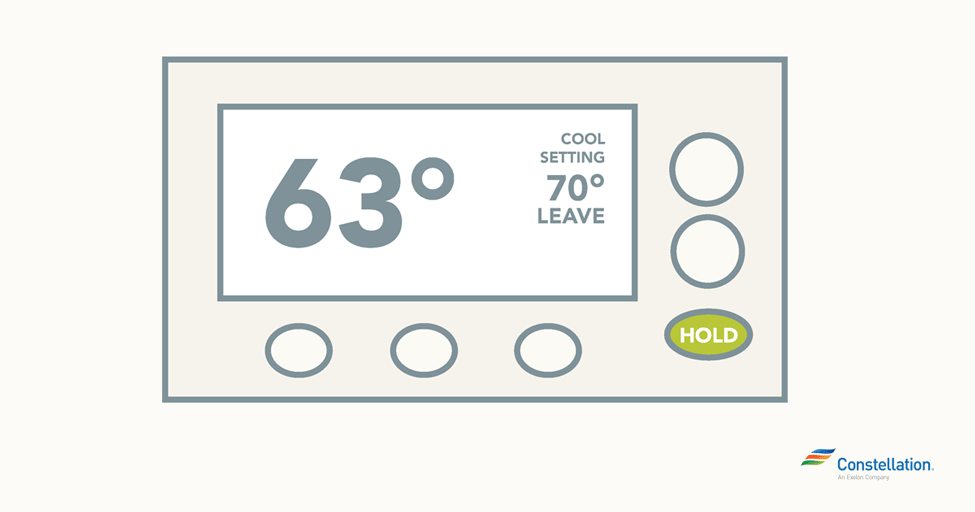Want to make a change that can quickly lower your home heating and cooling costs? Consider installing a programmable or self-programming thermostat.
According to ENERGY STAR, a homeowner can save as much as 10% a year in heating and cooling costs by turning back thermostats seven to 10 degrees Fahrenheit for eight hours a day. You can do this by hand, of course. But you can likely achieve greater savings using a programmable thermostat, because programmable thermostats can store multiple temperature settings for any given day. That means you can fine-tune the temperature in your house practically by the hour. According to ENERGY STAR, this can help homeowners achieve programmable thermostat savings of about $180 annually.
Before we look at the programmable thermostat savings, it’s important to understand the different types.
Consumer Reports describes the benefits of programmable thermostat varieties this way:
- 7-day models offer the most flexibility by allowing homeowners to set different programs (usually with four different temperature periods per day) for each day of the week.
- 5+2 models allow homeowners to have one set schedule for Monday-Friday and one schedule for weekends.
- 5-1-1 models are good for homeowners who want to set one temperature schedule for Monday-Friday and then a different schedule for each day of the weekend.
Homeowners who want to achieve maximum programmable thermostat savings, however, might consider investing in a smart- or self-programming thermostat. Programmable communicating thermostats (aka “smart” thermostats) are connected to a home’s WiFi. These programmable communicating thermostats allow homeowners to make changes to the temperature settings from afar. Let’s say, for instance, you’re on vacation and a sudden cold front sweeps through your hometown. You’re concerned that the pipes might burst because the house is too cold. All you’ve got to do is use your mobile phone or computer to go online and adjust your setting. Peace of mind, guaranteed. Another point to consider when deciding between a smart vs. programmable thermostat is that the smart model, connected to your WiFi, can receive manufacturer upgrades automatically, and the homeowner doesn’t need to do a thing.
This takes self-programming thermostat technology up a notch. These thermostats have sensors that enable them to monitor motion, light and humidity. Being able to do this allows a self-programming thermostat to learn a homeowner’s habits and program itself accordingly. A self-programming thermostat is more expensive to purchase, and requires a WiFi connection, but it can go a long way towards saving money in the long run.
The chart below shows how you might set up a programmable thermostat for both heating and cooling.
Potential benefits of programmable thermostats
The potential benefits of programmable thermostats depend to some extent on lifestyle, but here are some ways to find programmable thermostat savings opportunities:
- Set it and forget it! Instead of having to manually change settings multiple times a day, a homeowner can set the thermostat once for the household’s daily or weekly needs. There’s always the option to override if necessary.
- Programmable thermostats eliminate guesswork. No more worrying about remembering to turn down that heat or air conditioning before you walk out the door. And, if you’ve opted for a smart vs. programmable thermostat, you can always make changes from afar by overriding the set temperature plan. One of the benefits of programmable thermostat devices is that your home can be at optimal energy efficiency all the time, and you don’t have to constantly be monitoring how your home’s energy use is functioning.
- Does your family engage in “thermostat wars” where some are too hot, others too cold? There’s no more bickering, and no more wasted heating and cooling because a programmable thermostat could offer as many as eight different climate control zones. That means you can heat or cool specific rooms when you want to, and choose individual temperature settings.
- They work for both heating and cooling.
You won’t realize the potential benefits of programmable thermostats, however, if you don’t pay attention to thermostat location. Where you place a thermostat is critical to achieving maximum programmable thermostat savings. Placing a thermostat too close to a heat source, for instance, will likely make your heating less efficient.
With that in mind, experts advise keeping your thermostat location away from the following:
- Direct sunlight
- Above air vents
- The kitchen
- The hallway
- Doors or windows
The ideal thermostat location is an interior wall away from these spots, ideally near the center of the house. When considering your thermostat location, it’s also smart to keep in mind which rooms people use most since these are the rooms where you want the temperature to be the most comfortable.
In addition to proper thermostat location, ENERGY STAR recommends the following guidelines for optimal programmable thermostat savings.
- For at least eight hours each day, use energy savings setpoints to determine temperature. If everyone will be out during the day, or at night when people are sleeping, for example, you can set your thermostat to a lower temperature.
- While all programmable thermostats allow a homeowner to override a setting without erasing the pre-set programming — the override is automatically cancelled at the next program period — regularly overriding the pre-programmed settings ultimately works against the potential benefit of a programmable thermostat.
- Thermostats usually have two types of hold features: hold/permanent/vacation and temporary. Do not use hold/permanent/vacation to manage day-to-day settings. Instead, only use this feature for longer periods of time.
- Avoid dramatic temperature changes. It will not heat or cool the house any faster and can work against any potential benefit of a programmable thermostat.
- You can maximize comfort and programmable thermostat savings by having a separate one in each heating or cooling zone in your home.
- If your programmable thermostat runs on batteries, don’t forget to change them once a year.
